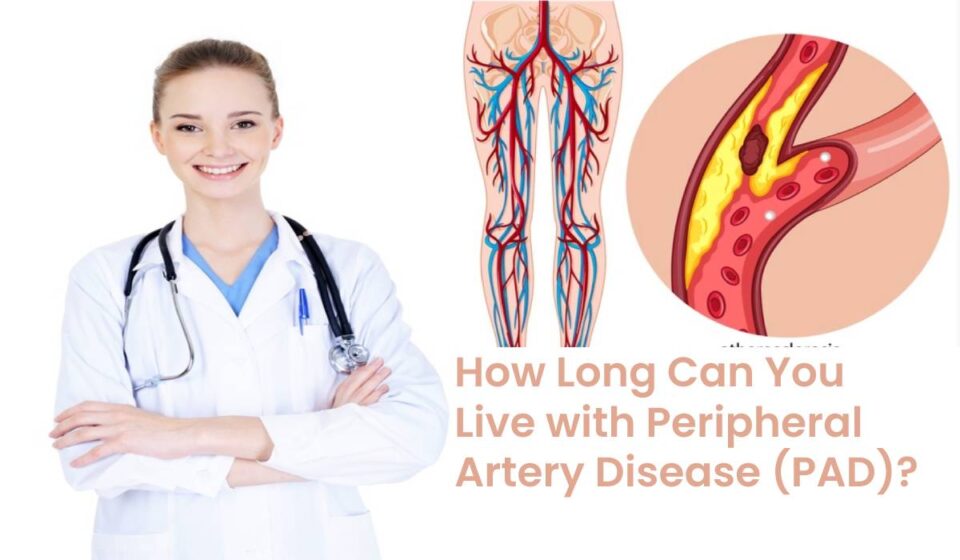What is Peripheral Artery Disease (PAD)?
Peripheral artery disease (PAD) is a common illness that affects more than eight million people aged 40 and older in the U.S. This serious condition is marked by clogging and narrowing of the arteries caused by plaque buildup (atherosclerosis), making it difficult for oxygen-rich blood to move freely through the legs and feet. The illness can cause pain and swelling and can occur in the hands and arms, but it is more common in the lower extremities.
Table of Contents.
While some patients may be aware that they have PAD, the disease is often asymptomatic, especially in the early stages. As the disease progresses, the patient may notice leg pain, tingling or numbness in the legs, and wounds that won’t heal.
Also Read: Pain Behind Knee: 5 Main Causes And What To Do For Cure
Continued progression for the disease may lead to the following:
Claudication, which is cramping when you walk or when you’re active due to limited blood flow
Critical limb ischemia (CLI), which will mark by severe arterial blockage. CLI can lead to heart attack, stroke, gangrene, amputation, or vascular death.
Acute limb ischemia, which is a medical emergency marked by total blood flow blockage
If you are concerned about PAD, ask your healthcare provider for an ankle-brachial index (ABI) or angiogram. These tests check for arterial plaque buildup in various ways. During an ABI, the blood pressure in your leg is compared to that in your arm. If the pressure is lower in the leg, it indicates a blockage. During an angiogram, a dye is injected into the arteries through a catheter. The doctor then takes an X-ray to determine where the blockage occurs.
For a specialized consultation, schedule an appointment with a peripheral artery disease specialist to better understand your risk.
Also Read: Get Healthy Stay Healthy while Recovering From An Injury
Peripheral Artery Disease and Life Expectancy
PAD associates with an increased risk of mortality, but you can lead a long and healthy life with proper treatment. Many patients who have been diagnosed with or are concerned about peripheral artery disease wonder about the prognosis. While some people with PAD may face the risk of issues like heart attack, stroke, or amputation, many of them can live a long life.
Early diagnosis is critical if you want to improve your lifespan. This means seeing a doctor as soon as you notice symptoms instead of blaming it on age or being “out of shape.” While there is no cure for PAD, you can manage it with treatment provided by a vascular doctor, especially if diagnosed in the early stages. If you work closely with your healthcare provider to embrace healthy lifestyle changes, there is a 75% chance that your PAD will not graduate to a more severe stage.
Lifestyle Changes to Improve Peripheral Artery Disease

The good news is we can treat the PAD. It doesn’t have to seriously alter or impact your quality of life if you get ahead of its progression with the help of your doctor and develop healthy habits. With savvy way of life adjustments, you can deal with your indications, begin feeling good, and further develop your anticipation. Along with the treatments prescribed by your doctor, you’ll want to incorporate the following:
Exercise: Get active for at least 30 minutes three to five times per week.
Eat well:
Focus on limiting or cutting out saturated fats, processed foods, sodium, sugary foods and beverages, and sodium. Eat whole grains, lean meats, and a lot of fresh, colorful foods instead.
Manage a healthy weight: It can be hard to lose weight, but it is critical that you strive to reach a healthy and realistic goal weight as determined by you and your doctor.
Quit smoking:
Smoking increases the risk of severe PAD. If you do smoke, consider contacting your doctor about a cessation program.
While developing these healthy habits can go a long way in preventing PAD or slowing down its progression, they aren’t a replacement for medical treatment. Your vascular doctor may recommend specific treatments which may improve blood flow in your legs and reduce symptoms. These treatments include:
Angioplasty, which is a procedure where a tiny catheter with a balloon on the end will insert into the artery where there is a block. The balloon is inflated to compress the plaque buildup against the arterial walls, allowing blood to flow again.
Also Read: How To Eliminate Abdominal Fat In Women and Stop It
Stent placement, which uses a wire mesh stent will place inside the artery to hold it open.
Atherectomy, which is another procedure using a tiny catheter. Hence, this time with a blade on the end to scrape plaque off the walls of the artery.
Your doctor will discuss these treatment options with you. So, that together you will decide the best course of action for your situation.
Take Control of Your Wellbeing
You deserve to live a long and happy life, and PAD doesn’t have to get in the way. Consider reaching out to a vascular specialist to learn more about treatment and ongoing care practices.


